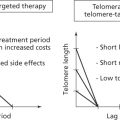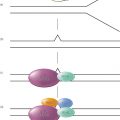Principles of imaging
Lawrence H. Schwartz, MD
Overview
Imaging is an indispensable component of clinical oncology. Computed tomography (CT) is usually more informative than plain X-rays. Metabolic imaging with 18F-fluorodeoxyglucose is best combined with anatomical verification by CT. Evolving studies of function linking magnetic resonance to CT imaging is another advance for precision assessment. Targeting specific molecules with labeled agents is an evolving sector. Invasive procedures performed under radiologic imaging have substantially displaced open surgery, with benefits to patients in comfort, time and costs.
Imaging plays a major and fundamental role in every aspect of oncology. Radiological studies provide invaluable information about tumor detection, characterization, staging, and therapeutic response monitoring. Increasingly, imaging in oncology is being used both as a prognostic biomarker and as a predictive biomarker, either alone or in combination with other tissue and serum biomarkers. Screening examinations such as mammography, low-dose CT for lung cancer, and virtual colonoscopy are other examples of the use of imaging in oncology. Finally, image-guided intervention has evolved significantly over the past few years and has tremendous potential for minimizing the invasiveness of many cancer therapies.
Cross-sectional imaging studies, including computed tomography (CT) and positron emission tomography (PET) scans using ionizing radiation as well as nonionizing magnetic resonance (MR) imaging, are the mainstay of care in the oncology patient and typically complement more traditional radiographs. While conventional radiological studies such as plain diagnostic X-ray examination films are easy to perform, deliver a low-dose of radiation, and are relatively inexpensive, their utility in the care of cancer patients is limited.
The type and frequency of radiological evaluation of the cancer patient depend on the tumor, the stage of the disease, and the specific clinical indication for the scan. There is a wide spectrum of indications that include screening, workup of the symptomatic patient, further evaluation of an abnormality found on another imaging study, assessing response or progression of a patient’s disease after a therapy or intervention, and evaluating complications of therapy. Before every radiology study is ordered, it is imperative to understand the clinical scenario, what information is needed, whether the test can provide the necessary evidence, and, importantly, what can and will be done with the results to change the treatment of the patient and potentially the patient’s outcome.
Stay updated, free articles. Join our Telegram channel

Full access? Get Clinical Tree







